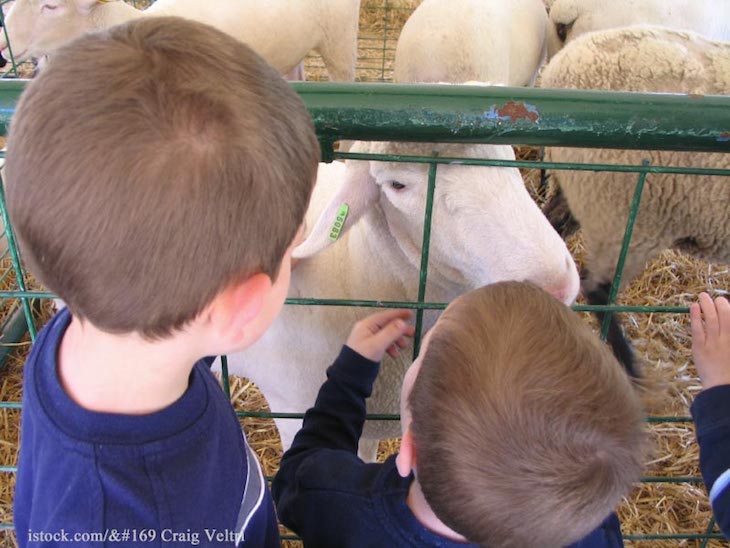The E. coli outbreak at the San Diego County Fair has now sickened 10 people, according to the San Diego Health & Human Services Agency. There is one more probable case that has not yet been confirmed. Three people have been hospitalized, and one 2-year-old child has died.

Officials have still not found the source of the pathogen. All of the children who are sick visited the animal areas, petting zoo, or had other animal contact at the fair. County Environmental health re-inspected food facilities that were visited by the children and found no link to the cases.
Unfortunately, E. coli outbreaks linked to animal attractions at fairs, petting zoos, and farm tourist attractions are nothing new. Almost every year children are sickened after visiting these venues.
Earlier this year, five people were sickened with E. coli infections after visiting Grant’s Farm in St. Louis, Missouri. Last year, an E. coli outbreak associated with raw milk and contact with farm animals in Tennessee sickened at least ten children. In all of these cases, officials have reminded visitors to be very careful to wash hands after contact with animals.

You can contact food safety lawyer Fred Pritzker for help by calling 1-888-377-8900.
Attorney Fred Pritzker, who has represented patients sickened by E. coli infections after visiting animal attractions, warned about the potential danger of these attractions earlier this year. Fred said, “These venues are problematic for fair owners and parents alike. Some fairs have ended petting zoos because of these serious and deadly outbreaks. States and the federal government have issued guidance and best practices checklists for fair organizers that should be followed to the letter.”
The issue is that ruminant animals such as cows and goats carry E. coli bacteria in their guts. The animals do not get sick from these pathogens, but they shed them in their feces. The feces can then contaminate bedding, railings, gates, and the animal’s coats.
The symptoms of an E. coli infection include a mild fever, vomiting, severe and very painful abdominal cramps, and diarrhea that is usually bloody and watery. In some patients, especially children under the age of 5, this infection can progress to a complication called hemolytic uremic syndrome (HUS), which is a type of kidney failure and can be life-threatening. Symptoms of HUS include little urine output, lethargy, and pale skin. Anyone exhibiting these symptoms should see a doctor immediately.




